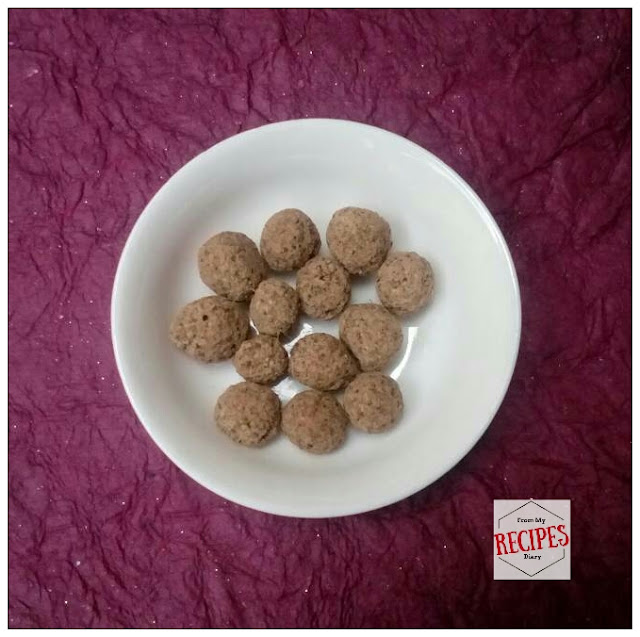Source:
Mrs. Shantha Krishnan
Ingredients:
Bitter Gourd (Pavakkai) - 1 (chopped)
Small Onions (Shallots) - 10 or 12 (peeled)
Sambhar Powder - 1-1/2 to 2 tsp
Grated Coconut - 1 tbsp
Tomato - 1 (chopped)
Thick Tamarind Extract - 1 tsp (or tamarind gooseberry sized)
Mustard Seeds - 1/2 tsp
Asafoetida/Perungayam/Hing - 1/4 tsp
Curry Leaves (Karuveppillai) - 1 sprig
Big Onion - 1 (chopped)
Rock Salt - 1 tsp (or as needed)
Oil - To fry
Jaggery - 2 tsp
Method:
1. Heat 1 tsp of oil in a kadai and fry the small onions, chopped tomatoes, grated coconut, sambhar powder, and tamarind for 2 minutes. Switch off the flame, allow to cool, and grind to a smooth paste adding no water or very little water.
2. In a kadai, heat 5 to 6 tsp of oil and add mustard seeds, hing, and curry leaves.
3. When the mustard seeds start to splutter, add the chopped big onion and chopped bitter gourd. Fry well until half cooked.
4. Now, add the ground paste and fry well for around 4 to 5 minutes until oil separates on the sides.
5. Add salt and jaggery and mix well. Allow to boil for a minute more. Add water and cook to desired consistency.
6. Serve hot with steamed rice.
My Notes:
1. Sundaikkai can be used instead of pavakkai.
2. After using the kuzhambu once, if anything is left over, boil the remaining until it thickens well (sunda vaikkavum) and use the next time you need or store in fridge until use. It stays good for at least 1 week when stored in fridge.
3. Adjust salt, sambhar powder, and jaggery according to your taste.
4. I make this kuzhambu to a thick consistency. Add water according to your needed consistency. Do not dilute the kuzhambu too much.
Mrs. Shantha Krishnan
Ingredients:
Bitter Gourd (Pavakkai) - 1 (chopped)
Small Onions (Shallots) - 10 or 12 (peeled)
Sambhar Powder - 1-1/2 to 2 tsp
Grated Coconut - 1 tbsp
Tomato - 1 (chopped)
Thick Tamarind Extract - 1 tsp (or tamarind gooseberry sized)
Mustard Seeds - 1/2 tsp
Asafoetida/Perungayam/Hing - 1/4 tsp
Curry Leaves (Karuveppillai) - 1 sprig
Big Onion - 1 (chopped)
Rock Salt - 1 tsp (or as needed)
Oil - To fry
Jaggery - 2 tsp
Method:
1. Heat 1 tsp of oil in a kadai and fry the small onions, chopped tomatoes, grated coconut, sambhar powder, and tamarind for 2 minutes. Switch off the flame, allow to cool, and grind to a smooth paste adding no water or very little water.
2. In a kadai, heat 5 to 6 tsp of oil and add mustard seeds, hing, and curry leaves.
3. When the mustard seeds start to splutter, add the chopped big onion and chopped bitter gourd. Fry well until half cooked.
4. Now, add the ground paste and fry well for around 4 to 5 minutes until oil separates on the sides.
5. Add salt and jaggery and mix well. Allow to boil for a minute more. Add water and cook to desired consistency.
6. Serve hot with steamed rice.
My Notes:
1. Sundaikkai can be used instead of pavakkai.
2. After using the kuzhambu once, if anything is left over, boil the remaining until it thickens well (sunda vaikkavum) and use the next time you need or store in fridge until use. It stays good for at least 1 week when stored in fridge.
3. Adjust salt, sambhar powder, and jaggery according to your taste.
4. I make this kuzhambu to a thick consistency. Add water according to your needed consistency. Do not dilute the kuzhambu too much.


